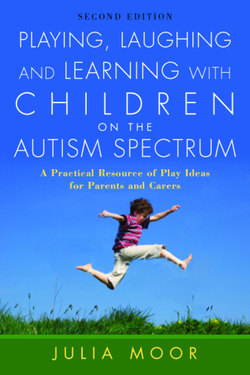Читать книгу Playing, Laughing and Learning with Children on the Autism Spectrum - Julia Moor - Страница 52
На сайте Литреса книга снята с продажи.
Why are computer activities particularly useful for children with ASDs?
ОглавлениеComputer activities have huge cause and effect potential – teaching a child that is reluctant to interact that even a small movement (such as pressing one key) can have a big effect on what happens on the screen. Empowering a child by showing him that he can have control over consequences shows him that engaging with activities is a positive and comforting source of interaction – the same action produces the same consequence every time.
Computer activities can capture attention where other activities have failed. There is merit in saying that a child should be learning language through the typical routes of watching and imitating others, but our atypical children sometimes need novel and varied ways of being introduced to the same concept. Computer images are lively, entertaining and hard to ignore.
Children with autism often find technology attractive and are drawn to computers. We can therefore capitalize on an activity to which our child might already be receptive.
Direct face-to-face learning can be so overwhelmingly uncomfortable that our child resists, ignores or switches off their attention. It may be that while we work on fun interactive activities to help our child be more comfortable with eye contact and communication, we can move more challenging learning activities to tolerable ‘side-by-side’ learning at the computer.
The nature of early learning at the computer is that spoken language is underplayed and visual learning is emphasized, putting children with receptive language difficulties at an advantage by using visual logic rather than audible speech to make sense of an activity. Even if they do not ‘think in pictures’, children with autism appear to consistently process visual information more easily than auditory information, and the computer uses this strong processing channel to the full.
